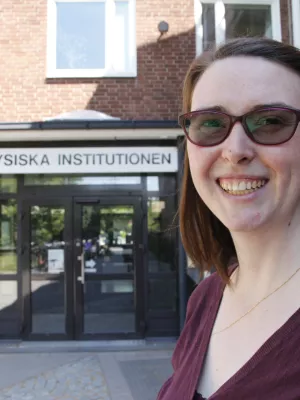
Hannah Herde
Interests: Higgs physics • dark matter searches • solid state tracking detectors • track reconstruction • active teaching methods • digital art • improv

Anomaly detection search for new resonances decaying into a Higgs boson and a generic new particle X in hadronic final states using Formula Presented pp collisions with the ATLAS detector
Author
Summary, in English
Department/s
- Particle and nuclear physics
- eSSENCE: The e-Science Collaboration
Publishing year
2023
Language
English
Publication/Series
Physical Review D
Volume
108
Issue
5
Document type
Journal article
Publisher
American Physical Society
Topic
- Subatomic Physics
Status
Published
ISBN/ISSN/Other
- ISSN: 2470-0010

